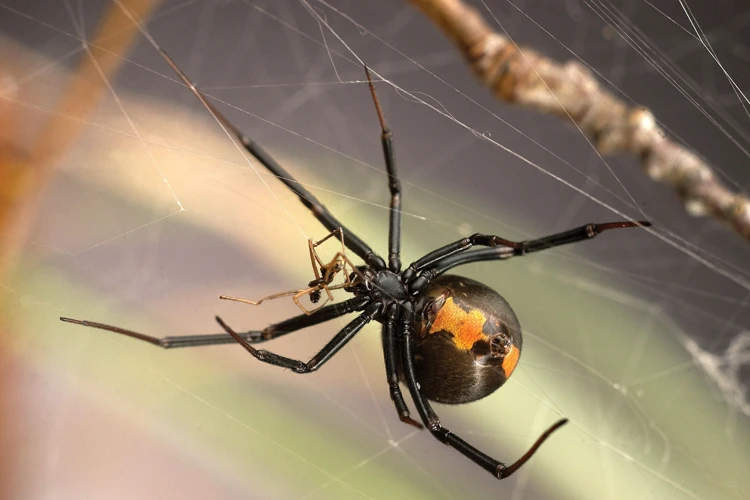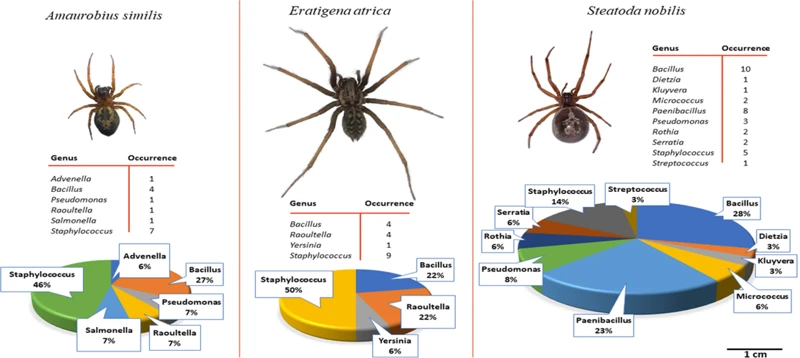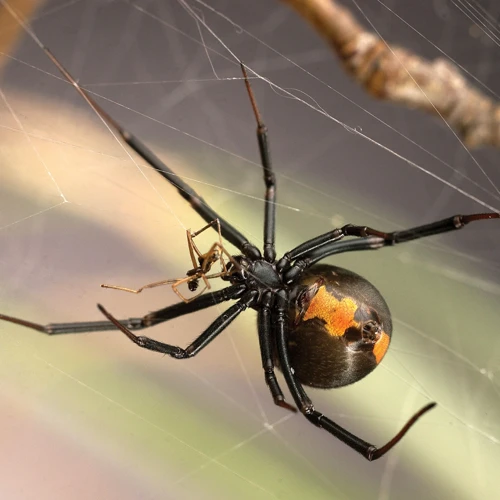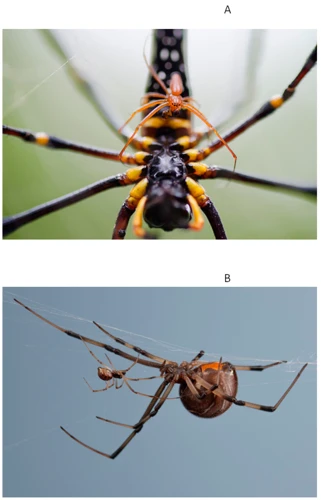As we delve into the world of black widow spiders, we cannot help but be perplexed by their unique and fascinating mating patterns. The process of mate choice plays a crucial role in the genetic diversity of these spider populations, and in turn, their long-term viability. In this article, we will explore the intricate relationship between mate choice and genetic diversity in black widow spider populations, and analyze the impact it has on their sustainability as a species. So, let’s dive right in and uncover the secrets of these enigmatic creatures.
What is Mate Choice?

Mate Choice is one of the most essential aspects of reproduction in animals, including Black Widow Spiders. It refers to the process by which individuals select their mate based on various factors. These factors include physical appearance, behavior, genetics, and environmental variables. The mate choice process plays a crucial role in determining the genetic makeup of the offspring. In the case of Black Widow Spider populations, understanding the impact of Mate Choice on genetic diversity is crucial for effective population management. To learn more about Black Widow Spider Mate Choice, check out our article on Black Widow Spider mating behavior.
Factors influencing mate choice in black widow spiders
Black widow spiders are subjected to various factors that influence their mate choice. Mate choice is a crucial decision that can impact the genetic diversity and long-term viability of spider populations. Let’s take a look at some of the key factors that influence mate choice in black widow spiders.
| Factor | Description |
|---|---|
| Mating Evolution | Mating behavior in black widow spiders has evolved over time. With changes in the environment and behavior, spiders have developed complex behaviors to attract suitable mates. Female black widows are known for their aggression towards male counterparts, and this has led to the evolution of male sacrifice behaviors. |
| Female Aggression | Female black widows are known to be aggressive towards males before and during copulation. This aggressive behavior helps females to select better mates and prevents weaker males from mating. However, it also creates a risk for the males as they may get attacked while mating. |
| Male Sacrifice | Sometimes, male black widows offer themselves as a meal to females during copulation, reducing the female hunger and increasing the chances of successful reproduction. |
| Cost-Benefits | Mating comes with potential costs and benefits. Males that are more attractive and suitable for mating may face the risk of being consumed by females or sustaining injuries. Females may prefer larger males, but this may come at the cost of a less successful mating process. Mating decisions are complex, and the benefits and costs of mating are weighed out. |
| Environmental Factors | The environment plays a role in mate selection in black widow spiders. Factors such as temperature, humidity, and light levels may influence mate choice as spiders prefer specific conditions for optimal mating success. |
| Female Preference | Female black widows may have a preference for larger males. Large males have been observed to have better chances of reproducing than their smaller counterparts. A larger size may indicate good genes, resistance to disease, and overall fitness. |
| Courtship | Mating in black widow spiders is preceded by an elaborate and specialized courtship behavior in which the male moves cautiously towards the female, tapping and vibrating its web. If successful, the male proceeds to mate, and if not, there is a risk of female aggression. |
| Mating Conflict | Black widow spiders are known for their mating conflicts. These conflicts arise due to the differences in mating preferences and options, leading to conflicts between males and females. Female aggression towards males is a common factor in these conflicts. |
As we can see, mate choice in black widow spiders is influenced by various factors, including environmental factors, female aggression, mating evolution, courtship, and more. By taking these factors into account, black widow spiders can ensure the best possible chances for successful reproduction and genetic diversity in their populations.
Genetic Diversity in Spider Populations

The genetic diversity of black widow spider populations is a hotly debated topic among researchers and biologists. Understanding the makeup of genetic diversity and its importance in populations is essential to the long-term survival of species. It is well-known that mate choice plays a significant role in shaping genetic diversity. However, factors such as environmental conditions, female aggression, and male sacrifice also have a considerable impact on genetic diversity. In this section, we will explore the concept of genetic diversity in spider populations and its importance. We will also delve into the various factors that influence mate choice and how they contribute to genetic diversity in black widow spider populations. (source)
What is genetic diversity?
Genetic diversity refers to the variety of alleles (different forms of genes) present in a population. It measures how many different versions of genes exist in a given population. In essence, genetic diversity is a measure of the genetic variation that exists among individuals within a population.
Why is genetic diversity important?
Genetic diversity is essential for the long-term viability of a population. Greater genetic diversity increases the likelihood that a species can adapt to changing environments and reduces the risk of extinction. It allows a population to evolve, and individuals to possess different combinations of genes that affect their physical appearance, reproduction, and immune systems.
A higher number of alleles in a population means that when environmental pressures arise, such as new diseases or natural disasters, some individuals in the population may possess genetic traits that allow them to better survive and reproduce. This means that those advantageous genetic traits can be passed on to future generations, increasing the overall fitness of the population.
Consequences of low genetic diversity
Low genetic diversity can make populations more susceptible to inbreeding depression, which is when closely related individuals mate and produce offspring with reduced fitness. A lack of genetic diversity can lead to the accumulation of harmful mutations, which can affect an individual’s ability to survive and reproduce.
In the case of black widow spiders, low genetic diversity could lead to the loss of unique alleles among individuals, resulting in a decline in overall fitness. For example, if a population of black widow spiders with low genetic diversity faces a disease outbreak, it may be more difficult for the population to build resistance, and it could quickly become extinct.
To better understand how mate choice influences genetic diversity in black widow spiders, we need to explore the factors that influence mate choice in these arachnids, which will be discussed in the upcoming subheading.[1]
| Pros of genetic diversity | Cons of low genetic diversity |
|---|---|
| Disease resistance | Inbreeding depression |
| Adaptation to changing environments | Risk of extinction |
| Increased fitness | Accumulation of harmful mutations |
The importance of genetic diversity in populations
Genetic diversity is crucial for the survival and long-term viability of populations. This is because it helps to ensure that there is a range of traits within the population, which can increase the chances of survival in a changing environment.
Here are some of the key reasons why genetic diversity is important:
- Increases the resilience of populations to environmental changes, including disease outbreaks and climate change.
- Helps to prevent inbreeding and the expression of deleterious alleles, which can cause health problems and reduce the fitness of individuals.
- Enables populations to adapt to changing environmental conditions through the development of new traits.
- Increases the overall fitness of populations by providing a wider range of genetic material for natural selection to act upon.
Studies have shown that populations with low genetic diversity are more vulnerable to extinction, as they are less able to respond to changes in the environment. In some cases, low genetic diversity can lead to an increased risk of disease outbreaks, as the population is more susceptible to pathogens.
For example, research conducted on black widow spiders has shown that populations with low genetic diversity are more likely to experience reductions in population size and even local extinction. This is because low genetic diversity can reduce the ability of populations to adapt to changing environmental conditions and increases their susceptibility to disease.
It is essential to protect genetic diversity in black widow spider populations to ensure their long-term viability and survival. This can be achieved through a variety of measures, including protecting the habitats of these spiders, reducing habitat fragmentation and loss, and limiting human impacts on their populations.
Black widow spider mating can be a complex and often violent process, but it is a crucial aspect of maintaining genetic diversity in their populations.
Mate Choice and Genetic Diversity

When it comes to the genetic diversity of a population, mate choice plays a crucial role in shaping its future. The process of mate choice involves a variety of factors, including male sacrifice, female aggression, and courtship behaviors. These factors influence which individuals are selected as mates, ultimately determining the genetic composition of future generations. In black widow spider populations, mate choice has been a particularly interesting area of study. Female preference for large male body size, as well as conflicts during mating, have been found to impact the genetic diversity of black widow spider populations in various ways. Let’s explore how mate choice influences genetic diversity in black widow spider populations and the long-term viability of these populations.
How mate choice influences genetic diversity
In black widow spider populations, mate choice plays a crucial role in determining genetic diversity. Through mate choice, individuals select partners based on various criteria, such as size, pheromones, and behavior. This process can influence the frequency of certain traits and genes in a population.
Size: Size is an important factor in mate choice for black widow spiders. Females tend to prefer larger males as they often have better chances of survival and reproduction. As a result, larger males have higher mating success and may contribute more to the gene pool. This can lead to an increase in the frequency of genes that promote larger body size in the population.
Pheromones: Black widow spiders use pheromones to communicate and attract mates. Female pheromones can influence male behavior, determining which males they choose to mate with. If certain males are consistently chosen over others, this can contribute to the frequency of specific traits or genes in future generations.
Behavior: Mate choice can also be influenced by behavior. In black widow spider populations, males may engage in courtship rituals and display aggressive or submissive behaviors during mating. Female preference for certain behaviors can impact the frequency of those behaviors and the genes responsible for them in future generations.
Understanding how mate choice influences genetic diversity in black widow spider populations is important for conservation efforts. By identifying which traits and genes are important for mate choice, conservationists can focus on protecting those populations and ensuring their long-term viability.
One example of how mate choice has impacted black widow spider populations is the function of male sacrifice during mating. This behavior, where males offer themselves as a food source to females during copulation, may have evolved as a way to increase female fitness and ensure successful reproduction. However, it also has the potential to limit genetic diversity, as fewer males survive to pass on their genes.
Mate choice is a critical factor that influences the genetic diversity of black widow spider populations. Factors such as size, pheromones, and behavior can impact which individuals are selected as mates, ultimately shaping the frequency of certain traits and genes in future generations. Conservation efforts can benefit from a better understanding of these processes and their impact on population viability.
Examples of how mate choice has impacted black widow spider populations
Examples of how mate choice has impacted black widow spider populations:
- Black widow males die after mating, and their corpses provide nutrients for the female and her offspring. This results in females having a preference for larger mates, as they provide more nutritional benefits. However, this preference has led to the decline of male body size in some populations, as smaller males may still successfully mate due to their agility and ability to escape female aggression.
- Courtship rituals can also impact mate choice and genetic diversity. For example, male black widows may exhibit bright colors and display elaborate courtship dances to attract females. Females may prefer these displays, leading to the selection of specific traits in male populations.
- Female aggression during mating is another factor that can impact mate choice and genetic diversity. Aggressive females may select for more aggressive males, who are better able to defend themselves during mating. This could lead to a decrease in genetic diversity overall, as certain traits are selected for.
- Female preference for large body size can also impact genetic diversity. Studies have shown that larger males tend to have higher genetic diversity, possibly due to their ability to resist disease and parasites. However, this preference can also lead to a decrease in genetic diversity if smaller males are excluded from mating opportunities.
- Mating conflict can also impact genetic diversity in black widow spider populations. While females may choose mates based on certain traits, males may try to force copulation and mate with unwilling females. This can lead to a decrease in genetic diversity if the same males mate with multiple females, essentially reducing the number of unique genetic combinations in the population.
These examples highlight the complex interplay between mate choice and genetic diversity in black widow spider populations. While certain preferences and behaviors can lead to a decrease in diversity, others may help to maintain or even increase it.
Long-Term Viability
As black widow spider populations continue to face various threats to their survival, the concept of long-term viability becomes increasingly important. The ability of these populations to persist over time is largely dependent on factors such as genetic diversity and mate choice. This is because genetic diversity provides a range of traits within a population that can help to ensure its ability to adapt to changing environments and external pressures. In this section, we will explore the relationship between genetic diversity, mate choice and the long-term viability of black widow spiders. Additionally, we will discuss the actions that can be taken to protect these populations from further decline, including the controversial concept of male sacrifice during mating.
How genetic diversity affects long-term viability
The long-term viability of a species depends heavily on genetic diversity. Genetic diversity plays a vital role in maintaining healthy populations by enabling adaptation to changing environmental conditions and reducing the negative effects of inbreeding. Inbreeding causes the expression of harmful recessive traits, thereby reducing the overall fitness of the population. This is particularly important for black widow spiders as they are prone to inbreeding due to their mating behaviors.
The mating behaviors of black widow spiders have a significant impact on their genetic diversity and long-term viability. Black widow males have to compete vigorously for the opportunity to mate with females, who are known to be highly selective in their choice of mates. This selectivity leads to a reduction in the number of males that successfully mate, resulting in a smaller effective population size and increased inbreeding. Additionally, black widow females have been observed to prefer males with specific phenotypic traits, such as larger body size, indicating that certain traits may be advantageous in the population.
Studies have shown that populations with low genetic diversity are more vulnerable to environmental stressors, such as disease outbreaks, habitat loss, and climate change. For example, a study conducted on black widow spider populations in South Africa found that populations with low genetic diversity were more susceptible to parasitic infections and had a higher prevalence of malformed individuals.
To ensure the long-term viability of black widow populations, conservation efforts must focus on preserving genetic diversity and reducing the negative effects of inbreeding. This can be achieved through a variety of methods, including habitat protection and restoration, reducing human impacts on the environment, and implementing breeding programs that aim to increase genetic diversity. Additionally, educating the public about the importance of genetic diversity in maintaining healthy populations can increase support for conservation efforts.
Genetic diversity plays a crucial role in the long-term viability of black widow spider populations. Their mating behaviors and preferences have a significant impact on their genetic diversity, which in turn affects their ability to adapt to changing environmental conditions. It is important to prioritize conservation efforts that aim to preserve genetic diversity and reduce the negative effects of inbreeding to ensure the survival of these fascinating spiders.
What can be done to protect black widow spider populations?
Black widow spiders play a crucial role in maintaining ecological balance, and protecting their populations is important to ensure long-term ecological sustainability. Here are some measures that can be taken to protect the black widow spider populations:
| Measures | Description |
|---|---|
| Conservation of habitat | This involves the protection of habitats where black widow spiders are found. These habitats can be conserved by minimizing human activities that cause habitat degradation such as deforestation and mining. |
| Control of pesticides | The use of pesticides has been shown to have adverse effects on black widow spider populations. There is a need to control the use of pesticides or use non-toxic alternatives such as biopesticides. |
| Education and awareness | Creating awareness among people can go a long way in protecting black widow spider populations. People can be educated about the importance of black widow spiders, and the role they play in maintaining ecological balance. This can help to reduce practices that are harmful to these spiders, such as killing them out of fear. |
| Research and monitoring | Research can be conducted to better understand black widow spider populations. Such research can help to identify the factors that threaten their populations, leading to the development of more effective conservation strategies. Monitoring black widow spider populations can also help to track population trends and develop conservation plans accordingly. |
By implementing these measures, we can help to protect black widow spider populations and ensure their long-term viability. This can go a long way in maintaining ecological balance and preserving biodiversity.
Conclusion
After examining the impact of mate choice on the genetic diversity of black widow spider populations, it is evident that mate choice plays a crucial role in maintaining genetic diversity within the species. Black widow spiders exhibit a highly complex and nuanced mate choice behavior, with both male and female spiders displaying specific preferences and selecting potential mates based on various factors.
Furthermore, genetic diversity is of utmost importance in ensuring the long-term viability of populations. Without genetic diversity, populations become more susceptible to diseases, environmental changes, and other ecological factors that can lead to population decline or even extinction. Thus, the interplay between mate choice and genetic diversity is a crucial element that underpins the survival and success of black widow spider populations.
To ensure the preservation of black widow spider populations and their genetic diversity, it is important to consider both the ecological and social factors that influence mate choice. For example, habitat destruction and fragmentation can significantly reduce the size and genetic diversity of black widow spider populations, while social factors such as inbreeding and mate competition can also impact genetic diversity.
Overall, understanding the role of mate choice in maintaining genetic diversity and the long-term viability of black widow spider populations is essential for effective conservation efforts. As humans continue to alter the natural habitat and ecosystems of these spiders, it is crucial to prioritize the conservation of this species and its genetic diversity to ensure their continued survival.
Frequently Asked Questions
What is the difference between male and female black widow spiders?
Male black widow spiders are significantly smaller and less dangerous than females. Females are known for their iconic red hourglass shape on their back.
How do black widow spiders choose their mates?
Black widow spiders choose their mates through pheromones and behavior cues, such as courtship rituals and vibrational signals.
Can black widow spiders mate multiple times?
Yes, female black widow spiders can mate multiple times and have multiple partners, which can increase the genetic diversity of their offspring.
What is the role of genetic diversity in spider populations?
Genetic diversity is important for the long-term viability and adaptability of spider populations. It helps them withstand environmental changes and resist disease.
How does inbreeding affect genetic diversity in spider populations?
Inbreeding can decrease genetic diversity and increase the likelihood of harmful genetic mutations. This can ultimately lead to decreased fitness and survival in spider populations.
Can human activity impact the mate choices of black widow spiders?
Yes, human activity can disrupt the natural landscape and alter the availability of potential mates for black widow spiders, which can impact their mate choices and ultimately their genetic diversity.
What are some of the threats facing black widow spider populations?
Some of the threats facing black widow spider populations include habitat destruction, climate change, pesticides, and competition with invasive species.
Are black widow spiders dangerous to humans?
Yes, female black widow spiders can be dangerous to humans. Their venom is neurotoxic and can cause serious symptoms such as muscle pain, spasms, and respiratory distress.
Protecting black widow spider populations requires preserving their natural habitat, reducing pesticide use, and promoting greater awareness about their importance and ecological role in local ecosystems.
How do black widow spiders contribute to the ecosystem?
Black widow spiders are natural predators that help control the population of other insects and pests. They also serve as a food source for other animals in the ecosystem.







